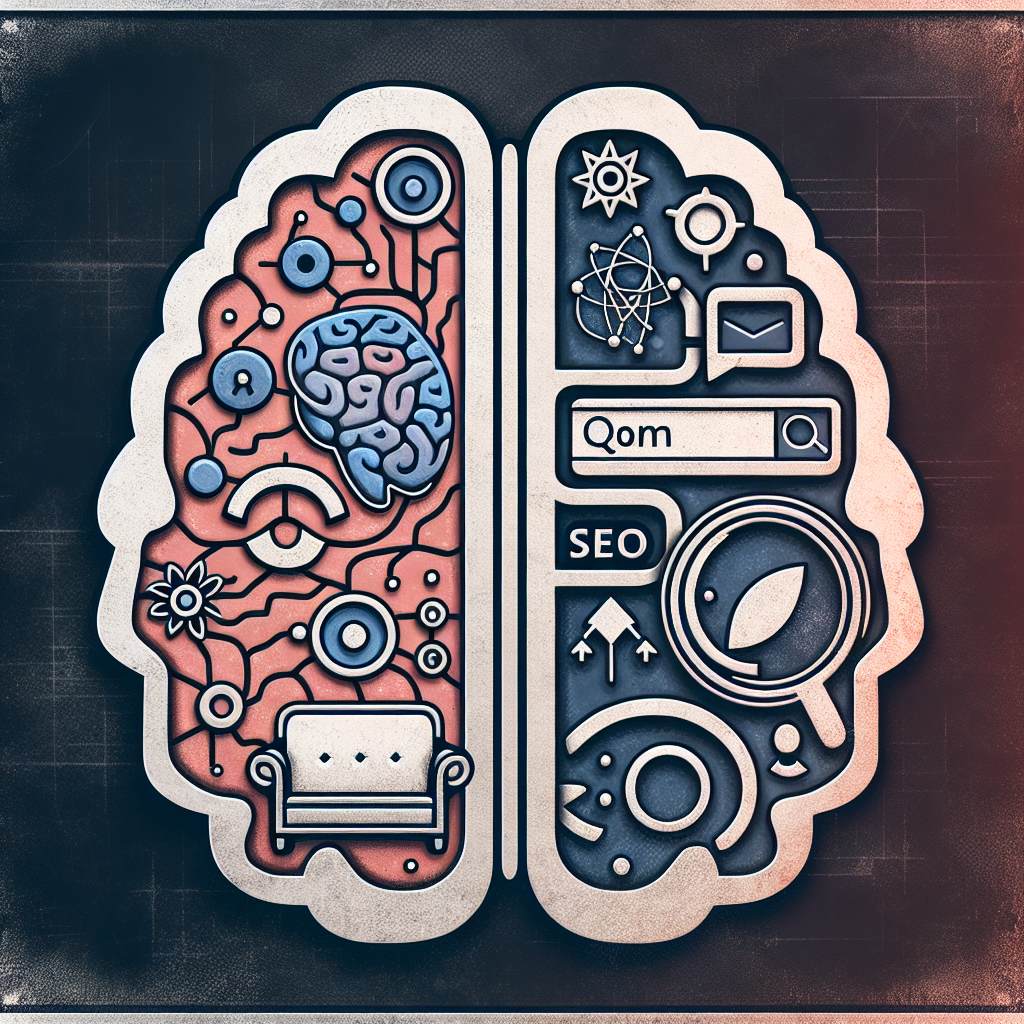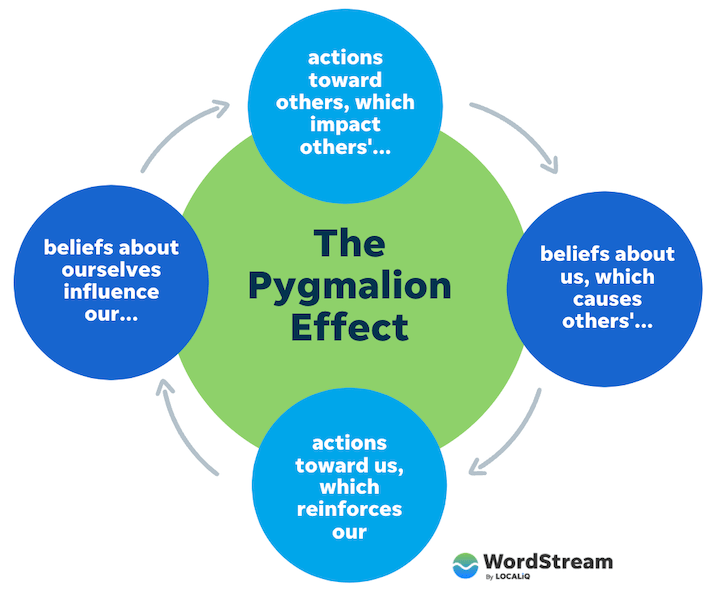Uncover the secrets behind how psychology plays a vital role in SEO success. Discover expert insights and game-changing tips!

Image courtesy of via DALL-E 3
Table of Contents
Welcome to our blog post on the fascinating topic of the role of psychology in SEO. In this article, we will explore the connection between psychology, the study of the mind and behavior, and SEO, the practice of optimizing websites to increase visibility on the internet. By understanding how people think and behave online, we can improve SEO strategies to better meet the needs of users.
What is Psychology?
Psychology is the study of the mind and behavior. It helps us understand why people think and act the way they do. By looking at how users interact with websites, we can apply psychological principles to make online experiences more engaging and effective.
What is SEO?
SEO, or Search Engine Optimization, is the process of making websites more visible on search engines like Google. By optimizing content and following best practices, websites can rank higher in search results, making it easier for users to find them. Psychology plays a crucial role in shaping SEO strategies to attract and retain users.
Why Psychology Matters in SEO
User Intent
When you search for something on the internet, you have a specific reason in mind. Understanding what people want when they type in search terms helps websites show up in the results. By knowing what users are looking for, websites can tailor their content to meet those needs.
Emotional Triggers
Emotions play a big role in the decisions we make, including which websites we click on when searching. Websites can use emotional triggers like happiness, fear, or curiosity to create content that captures your interest. This helps websites stand out and keeps you engaged.
Cognitive Biases and SEO
In the world of Search Engine Optimization (SEO), understanding how people think and make decisions is crucial for creating successful online strategies. One important aspect of psychology that plays a significant role in SEO is cognitive biases. Let’s dive into what cognitive biases are and how they impact the way people search for information online.
What are Cognitive Biases?
Cognitive biases are like mental shortcuts that our brains take when making decisions. Instead of carefully considering all the information available, our brains often rely on these biases to quickly process and interpret data. For example, confirmation bias is a common cognitive bias where we tend to favor information that confirms our existing beliefs.
Examples of Cognitive Biases Impacting SEO
When it comes to SEO, cognitive biases can influence the way people search for and engage with content online. For instance, confirmation bias can lead users to click on search results that align with their preconceived notions, affecting the traffic certain websites receive. Additionally, availability heuristic is another bias that causes people to overvalue easily accessible information, potentially impacting the visibility of certain websites in search results.
User Experience (UX) and SEO
In the world of websites and search engines, a crucial connection exists between User Experience (UX) and Search Engine Optimization (SEO). Let’s dive into understanding the significance of good user experience in shaping effective SEO strategies.

Image courtesy of coolerinsights.com via Google Images
What is User Experience (UX)?
User Experience, often abbreviated as UX, refers to how a person feels when they interact with a website. Imagine visiting a site that is easy to navigate, loads quickly, and presents information in an organized manner – that would result in a positive user experience. On the flip side, encountering a site with confusing layouts, slow loading times, or irrelevant content would lead to a negative user experience.
How UX Affects SEO
The interaction users have with a website directly impacts its search engine rankings. Search engines like Google prioritize websites that offer a seamless and enjoyable user experience. If visitors quickly find what they’re looking for and engage with the content, search engines recognize the site as valuable and relevant. This recognition often leads to higher rankings in search results, making the website more visible to potential visitors.
Behavioral Signals and Search Engines
Behavioral signals are like clues that show search engines how people interact with websites. Some signals include things like the number of times people click on a site in search results, how long they stay on a page (dwell time), and if they leave a page quickly (bounce rate). These signals help search engines understand which sites are helpful and relevant to users.
Why They Matter
These signals are important because they help search engines decide which websites should be ranked higher in search results. If a website has good behavioral signals like high click-through rates and longer dwell times, search engines will see it as valuable and useful to users. On the other hand, sites with low engagement and high bounce rates may be seen as less helpful and could be ranked lower.
Making Content that Appeals to Users
Creating content that resonates with users is essential for a successful SEO strategy. By understanding what your audience wants and needs, you can craft engaging and relevant content that drives traffic to your website. Here are some tips on how to make content that appeals to users:

Image courtesy of www.wordstream.com via Google Images
Know Your Audience
Before creating any content, it’s crucial to research and understand your target audience. What are their interests, pain points, and preferences? By knowing who you’re trying to reach, you can tailor your content to meet their needs effectively.
Use Engaging Headlines
Headlines are the first thing users see when they come across your content. Writing intriguing and captivating headlines can grab their attention and entice them to click through to read more. Be creative and compelling in your headline to draw users in.
Relevant and Clear Information
When creating content, make sure it is clear, relevant, and useful to your audience. Answer common questions, provide solutions to problems, and offer valuable information that users are seeking. By delivering content that meets their expectations, you can keep users engaged and coming back for more.
Testing and Analyzing User Behavior
Testing and analyzing user behavior is a crucial part of improving SEO. By understanding how users interact with a website, we can make informed decisions to enhance their experience and increase engagement. Let’s delve into two key methods: A/B testing and the use of analytics tools.
A/B Testing
A/B testing, also known as split testing, involves comparing two versions of a web page to see which one performs better. This process helps identify elements that resonate with users and drive desired actions. For example, you can test different headlines, call-to-action buttons, or color schemes to determine what appeals most to your audience. By analyzing the results, you can optimize your website for maximum impact.
Using Analytics Tools
Analytics tools are essential for tracking and analyzing user behavior on a website. These tools provide valuable insights into how visitors navigate the site, what content they engage with the most, and where they drop off. By monitoring metrics like bounce rate, time on page, and conversion rates, you can gain a deeper understanding of user preferences and behaviors. This data can guide content creation, design improvements, and overall SEO strategy to better meet the needs of your target audience.
Practical Tips for Better SEO with Psychology
When it comes to improving your website’s SEO, one key factor to consider is the ease of navigation. Imagine trying to find a specific toy in a messy room – it can be frustrating and time-consuming. The same goes for websites. By simplifying your website’s navigation, you make it easier for visitors to find what they’re looking for, encouraging them to stay longer and explore more of your content. This not only enhances the user experience but also signals to search engines that your site is user-friendly, potentially boosting your SEO rankings.

Image courtesy of www.linkedin.com via Google Images
Use Persuasive Copywriting
Words have power – they can persuade, inspire, and motivate. When creating content for your website, consider using persuasive copywriting techniques to engage and influence your audience. By crafting compelling headlines and persuasive language, you can capture the attention of visitors and encourage them to take action, whether it’s making a purchase, signing up for a newsletter, or sharing your content. This not only enhances user engagement but can also improve your SEO performance by increasing click-through rates and reducing bounce rates.
Create a Connection
Humans are emotional beings – we crave connection and authenticity. When developing your website’s content, focus on creating emotional connections with your audience through storytelling and personalized messaging. By sharing relatable stories, addressing common pain points, or tailoring your content to specific audience segments, you can build trust and loyalty with your visitors. This emotional connection not only enhances user satisfaction but can also lead to higher engagement, more shares, and increased visibility on search engines, ultimately boosting your SEO performance.
Summary
In this article, we explored the fascinating relationship between psychology and SEO, two seemingly different fields that actually work hand in hand to improve website visibility and user experience. By understanding how people think and behave, we can create better strategies for search engine optimization.
Key Takeaways
Throughout the discussion, we learned that psychology plays a crucial role in SEO success. By understanding user intent and emotional triggers, we can create compelling content that resonates with our audience. Cognitive biases also impact search behavior, influencing the way people interact with search results and content.
User experience, or UX, is another vital component of effective SEO strategies. A pleasant website experience leads to better search rankings, emphasizing the importance of clear navigation and engaging design. Behavioral signals like click-through rate and dwell time are used by search engines to determine the relevance and usefulness of a website.
To create content that appeals to users, it is essential to know your audience, use engaging headlines, and provide relevant and clear information. Testing and analyzing user behavior through methods like A/B testing and analytics tools can further improve SEO performance.
Lastly, we discussed practical tips for integrating psychology into SEO practices, such as simplifying navigation, using persuasive copywriting, and creating emotional connections with users through storytelling and personalized content. By aligning psychology with SEO, we can enhance the overall effectiveness of our digital marketing strategies.
FAQs
How can I start using psychology in SEO?
Starting to use psychology in SEO is easier than you think! Begin by understanding your target audience – their needs, preferences, and behaviors. This knowledge will help you create content that resonates with them. Additionally, focus on creating a positive user experience on your website by ensuring easy navigation, engaging content, and clear information. By incorporating psychological principles into your SEO strategy, you can make your website more appealing and accessible to users.
What are some common cognitive biases?
Common cognitive biases include confirmation bias, availability heuristic, and anchoring bias. Confirmation bias is the tendency to seek out information that confirms our existing beliefs. Availability heuristic is when we make decisions based on readily available information. Anchoring bias occurs when we rely too heavily on the first piece of information we receive. These biases can impact search behavior and the way people engage with content online.
Why is user experience important?
User experience is crucial for the success of your website and its ranking on search engines. When users have a positive experience on your site – finding information easily, enjoying engaging content, and navigating intuitively – they are more likely to stay longer, interact more, and return in the future. Search engines take user behavior into account when determining rankings, so by prioritizing user experience, you can improve your SEO performance.







